What happens when your trustworthy training route becomes mundane? Most of us will just keep slogging through it for decades, losing that former feeling of motivation. Most people will just stay within their comfort zone, unsuccessfully searching to breakout of this death-spiral. What if there were a prescription to cure the banal, or what I call the “Suffermechanism?”
Professional counselors recommend breaking out of that same boring routine. For the ‘A-type’ personality, a dynamic change is sometimes what’s needed. I found my cure cycling Taiwan.
Scott revitalizes that old spirit
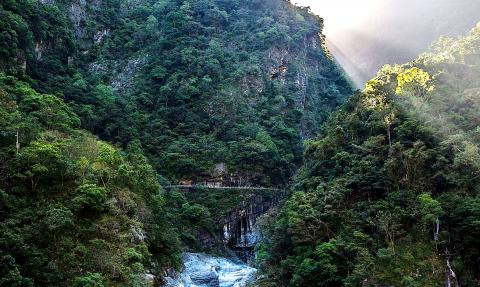
Photo courtesy of Taiwan Cyclist Federation
Five years ago I began browsing through magazines, books and blogs, hoping to revitalize that old spirit. I ran into Lee Rodgers at a cycling industry trade show in October of 2014. Lee, the international marketing manager for the Taiwan King of the Mountain (KOM) Challenge, told me about the event and I became intrigued.
The Taiwan KOM Challenge is an annual race that sees cyclists from all over the world scale some of Taiwan’s toughest peaks. The cyclists set off from Cisingtan (七星潭) in Hualien County, and travel 105km to Wuling (武嶺) on Hehuanshan (合歡山) in Nantou City.
After thinking it over back in my hotel room, I decided to throw down the gauntlet and join the event.
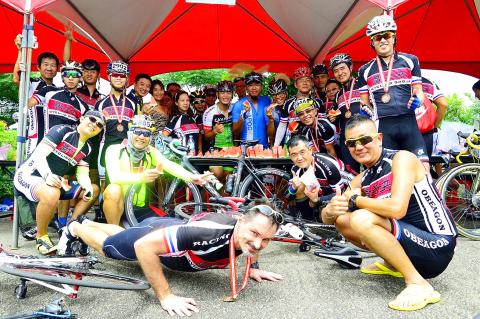
Photo courtesy of OBG Cycling Club
The first 18km is a neutral start and feels like just another race. That mundane feeling is still present. However, as the race peloton turns left off Hualien County’s Taroko Gorge Bridge, a warm fuzzy feeling fills me from my head down to my cleats. It dawns on me that this race is going to be the most epic experience of my life. It was not until we enter the actual gorge, cycling under the overhangs, taking in the amazing scenery, crossing bridges, looking down at the river below, listening to the sounds of nature, viewing the signs that mark the changes in elevation that it suddenly hits me — we are all going to ride to an elevation of 3,270m above ground level, into and above the clouds.
When I cross the finish line and receive my finisher’s medal, I am greeted with applause from strangers, race staff and other riders. Then someone hands me a small cup of hot ginger tea. There was the cure in front of me.
I keep returning to Taiwan each year to participate in the Taiwan KOM Challenge, which this year starts on Oct. 20.
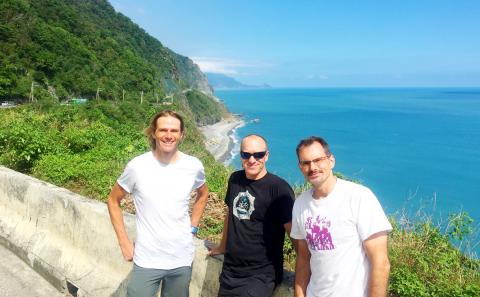
Photo courtesy of Scott Ellinger
Brett will return
Last year, I came to Taiwan for a third time to participate in the Taiwan KOM Challenge. I met Scott who tells me that he first discovered the country in 1988 while studying Chinese. On a trip in his car from Taipei to Hualien, the US expat told me stories about Taiwanese cycling culture from the perspective of a localized foreigner, who is well known on the Taiwan cycling circuit and seems to know the nation’s every cycling route.
During our car ride, he explained the most striking part of Taiwanese cycling: that clubs are welcoming and accepting of just about anyone.
I’ve discovered this myself. Taiwanese are always there to assist in time of need whether it be roadside motivation during a race, giving you an extra energy gel packet or top up of water, help changing a flat tire or just stopping to take a photo with you. The fellowship is unmatched anywhere else. There will always be someone to put a smile on your face and give you support whether during a race or just on a normal ride.
Will I return for a fourth time to the Taiwan KOM Challenge? Almost certainly.
It was only after my third time that I really understood: the people of Taiwan, the breath-taking beauty of the island, the ethos of the cycling community, the unique friendliness of Taiwanese cyclists and most of all, the beef noodle soup.
Cycling in Taiwan is not only magnificent but also addictive for anyone who discovers it.
Complete details of the Taiwan KOM Challenge can be found at the English and Chinese-language Web site: www.taiwankom.org.

Wooden houses wedged between concrete, crumbling brick facades with roofs gaping to the sky, and tiled art deco buildings down narrow alleyways: Taichung Central District’s (中區) aging architecture reveals both the allure and reality of the old downtown. From Indigenous settlement to capital under Qing Dynasty rule through to Japanese colonization, Taichung’s Central District holds a long and layered history. The bygone beauty of its streets once earned it the nickname “Little Kyoto.” Since the late eighties, however, the shifting of economic and government centers westward signaled a gradual decline in the area’s evolving fortunes. With the regeneration of the once
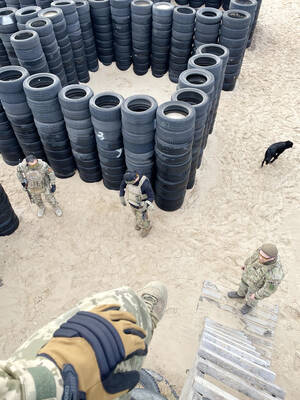
Even by the standards of Ukraine’s International Legion, which comprises volunteers from over 55 countries, Han has an unusual backstory. Born in Taichung, he grew up in Costa Rica — then one of Taiwan’s diplomatic allies — where a relative worked for the embassy. After attending an American international high school in San Jose, Costa Rica’s capital, Han — who prefers to use only his given name for OPSEC (operations security) reasons — moved to the US in his teens. He attended Penn State University before returning to Taiwan to work in the semiconductor industry in Kaohsiung, where he
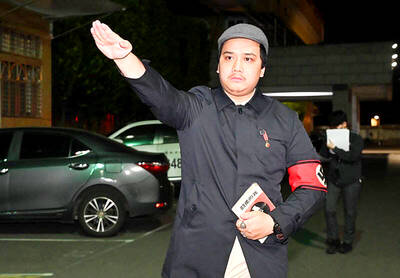
On May 2, Chinese Nationalist Party (KMT) Chairman Eric Chu (朱立倫), at a meeting in support of Taipei city councilors at party headquarters, compared President William Lai (賴清德) to Hitler. Chu claimed that unlike any other democracy worldwide in history, no other leader was rooting out opposing parties like Lai and the Democratic Progressive Party (DPP). That his statements are wildly inaccurate was not the point. It was a rallying cry, not a history lesson. This was intentional to provoke the international diplomatic community into a response, which was promptly provided. Both the German and Israeli offices issued statements on Facebook

Perched on Thailand’s border with Myanmar, Arunothai is a dusty crossroads town, a nowheresville that could be the setting of some Southeast Asian spaghetti Western. Its main street is the final, dead-end section of the two-lane highway from Chiang Mai, Thailand’s second largest city 120kms south, and the heart of the kingdom’s mountainous north. At the town boundary, a Chinese-style arch capped with dragons also bears Thai script declaring fealty to Bangkok’s royal family: “Long live the King!” Further on, Chinese lanterns line the main street, and on the hillsides, courtyard homes sit among warrens of narrow, winding alleyways and